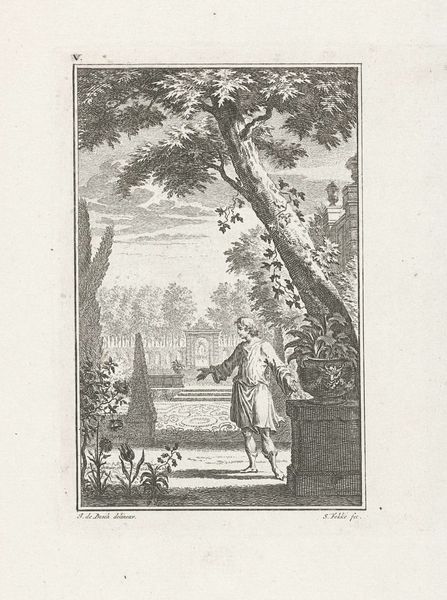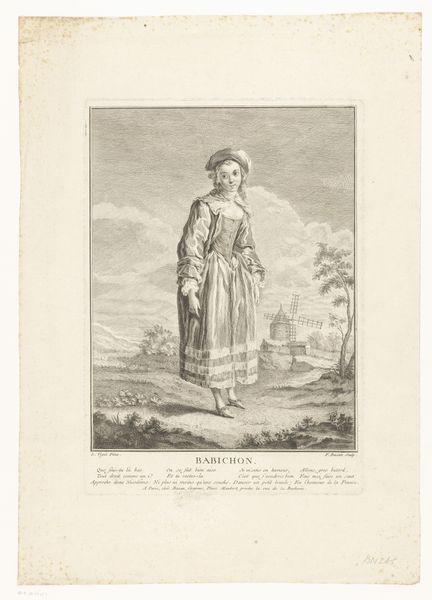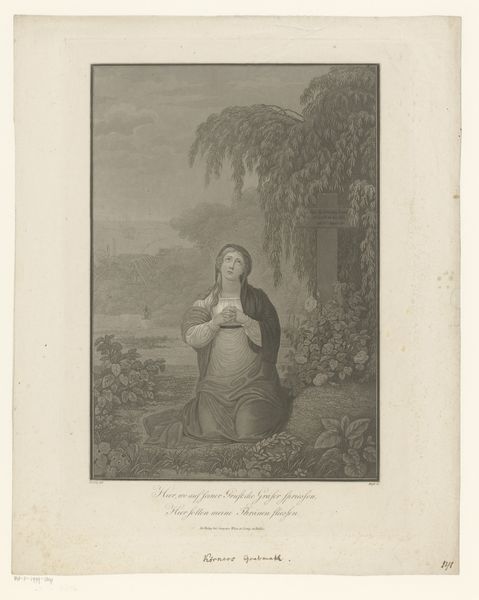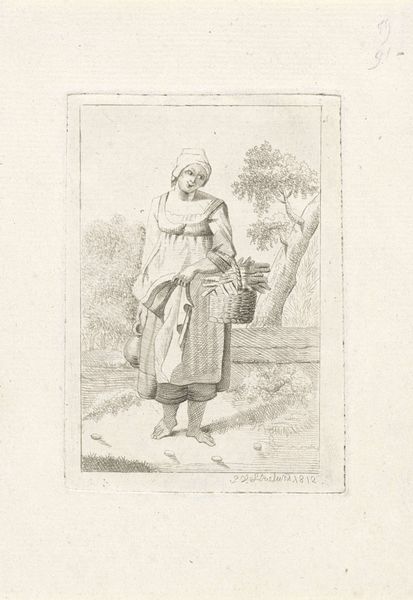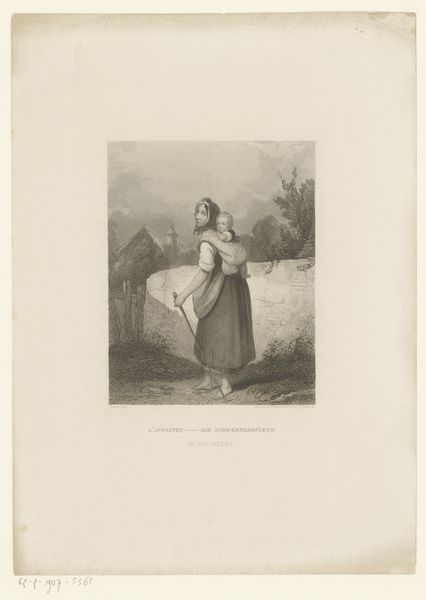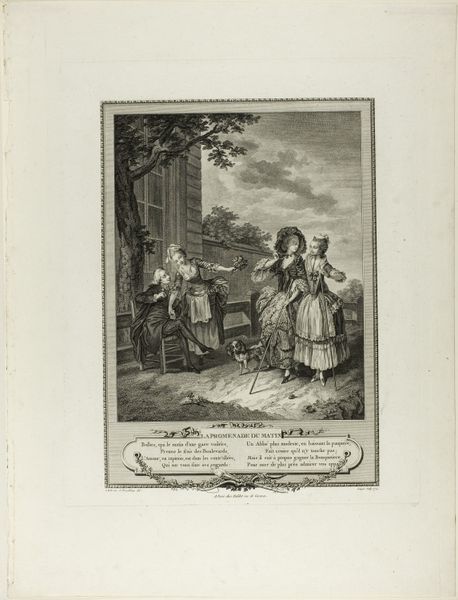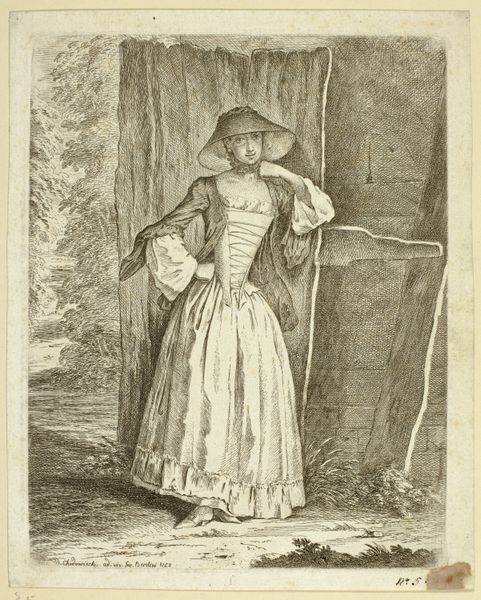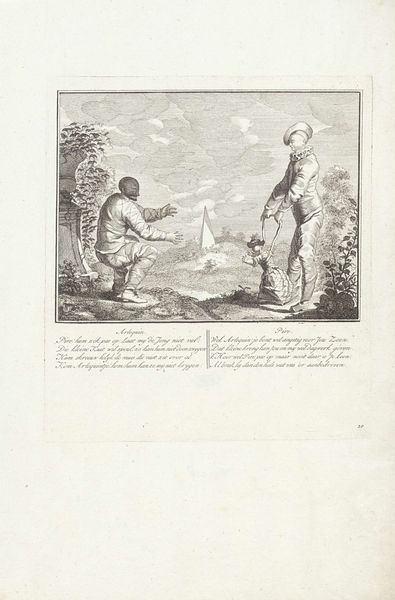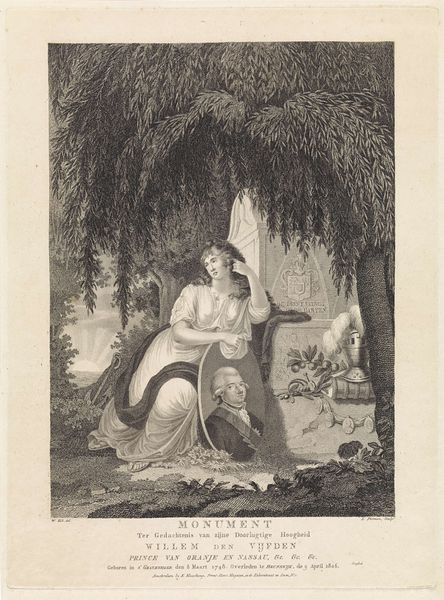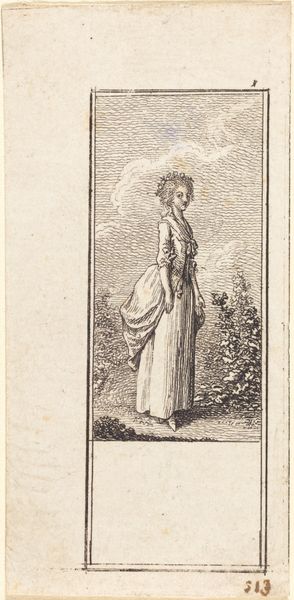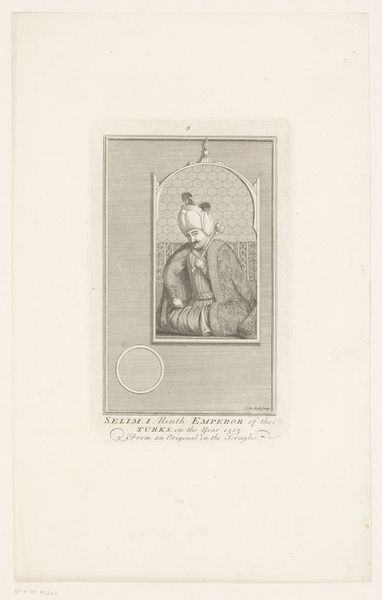
print, engraving
#
portrait
#
neoclacissism
# print
#
history-painting
#
engraving
Dimensions: height 387 mm, width 295 mm
Copyright: Rijks Museum: Open Domain
Curator: Today we are looking at a print of "Portret van Frederik, prins van Oranje-Nassau," dating roughly from 1790 to 1832 and created by David Moens. It's an engraving, a portrait of Prince Frederik against a rather dynamic backdrop. Editor: My initial impression? An odd juxtaposition. The figure is quite static, almost detached, while the background depicts a battle scene complete with cannons and charging soldiers. It’s a somewhat theatrical arrangement. Curator: Precisely. The artist employs Neoclassical techniques, prioritizing order and clarity in the Prince’s portrayal. His figure anchors the composition. Note the crisp lines defining his attire and facial features, offering a counterpoint to the chaos implied behind him. Editor: I find the implied narrative interesting. Here's Frederik, seemingly removed from the thick of conflict. It almost elevates the Prince above the fray. Is this suggesting leadership from afar, or a disconnect from the realities of war? Perhaps, there is also a critique of aristocratic privilege here? Curator: Indeed. The placement of the tent, map, and accoutrements signal his role in command and provide symbolic context of his responsibilities. But observe the stark tonal range created via the engraving technique: deep shadows versus highlighted areas sculpt form and also convey contrasting emotional weight within the artwork. Editor: The relatively small scale reinforces the distance. If this were a full-size painting, the Prince's pose might resonate as heroic or powerful. In print format, and juxtaposed with this particular background, there’s more room for questioning his relationship to the events depicted. How would the original audience react, especially amidst societal shifts occurring at the end of the 18th century? Curator: Considering the Neoclassical aesthetic that often aligned itself with Enlightenment ideals and republicanism, presenting the Prince in this format sparks meaningful analysis of art’s connection to prevailing sociopolitical ideals. Editor: I see how analyzing these elements enriches our understanding. The work seems straightforward, yet invites complex discourse surrounding power, representation, and artistry. Curator: The dialogue between form and historical context enhances both realms!
Comments
No comments
Be the first to comment and join the conversation on the ultimate creative platform.
